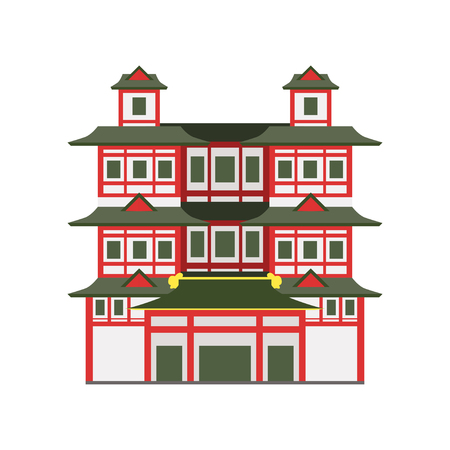1. Introduction: Embracing Wind Chimes in the American Context
Wind chimes have long been cherished across different cultures, serving as both decorative and symbolic objects. While their origins trace back thousands of years to Asia—especially China and Japan—wind chimes have found a special place in American homes, apartments, and gardens. Americans appreciate wind chimes not only for their soothing sounds but also for their ability to enhance outdoor spaces and create a sense of tranquility.
Historical Roots and Cultural Significance
The earliest wind chimes were crafted from bamboo, shells, or metal and were used to ward off evil spirits or attract good fortune. In the United States, wind chimes became popular during the 20th century as people sought ways to personalize their living spaces and connect with nature. Over time, these gentle instruments have woven themselves into the fabric of American outdoor and indoor decor.
Integration into American Lifestyles
| Aspect | Asian Tradition | American Adaptation |
|---|---|---|
| Material | Bamboo, bronze, ceramic | Metal, glass, recycled materials |
| Purpose | Spiritual protection, luck | Decorative accent, relaxation |
| Placement | Temples, gardens | Porches, patios, garden beds, windows |
| Cultural Resonance | Symbolism & ritual meaning | Aesthetic enjoyment & personal expression |
The Wind Chime Experience in America
Today, wind chimes are embraced by people across the United States for their calming melodies and unique designs. Whether hung on a city apartment balcony or in a suburban backyard garden, wind chimes bridge cultural traditions while reflecting local tastes. Their soft sounds evoke peaceful moments and offer a subtle way to celebrate both heritage and individuality in American life.
2. Aesthetic Appeal and Home Decor
The Visual Charm of Wind Chimes in American Homes
Wind chimes have become a popular decorative item in American apartments, houses, and gardens. They come in a variety of materials, colors, and styles, making them easy to blend with many types of home decor. Whether you live in a modern city apartment or a cozy suburban house, wind chimes can add a touch of elegance and personality to your space.
Blending with Different Architectural Styles
One of the reasons wind chimes are so loved in the United States is their versatility. Homeowners choose chimes that match their architectural style—be it farmhouse, colonial, contemporary, or craftsman. Here’s how wind chimes can be used in different settings:
| Setting | Popular Wind Chime Styles | Placement Ideas |
|---|---|---|
| Urban Apartment | Minimalist metal or glass chimes | Balcony, near windows, entryway |
| Suburban House | Wooden or bamboo chimes | Front porch, backyard patio, garden path |
| Cottage or Farmhouse | Rustic or handmade ceramic chimes | Porch swing area, garden gate, tree branches |
| Modern Loft | Sleek geometric metal chimes | Living room corner, rooftop terrace, large window frames |
The Auditory Experience: Creating Atmosphere with Sound
The gentle sounds produced by wind chimes are just as important as their visual beauty. Many Americans enjoy the soothing tones that wind chimes create when the breeze passes through them. This calming effect is especially appreciated in outdoor spaces like gardens and patios but can also bring peace to indoor areas.
Why People Love Wind Chimes at Home
- Adds a relaxing ambiance to any setting
- Masks unwanted street noise or neighbor sounds
- Makes outdoor gatherings feel more inviting and peaceful
- Acts as a unique statement piece for personal style
No matter where they are placed, wind chimes help transform ordinary spaces into warm and welcoming environments that reflect the homeowner’s taste and lifestyle.

3. Cultural Meanings and Symbolism
Wind chimes in the United States have evolved beyond their original Asian roots and now carry unique cultural meanings for many Americans. While they are still appreciated for their beauty and calming sounds, their symbolism in American homes, apartments, and gardens often reflects local values and traditions. Let’s explore some of the key interpretations:
Luck and Good Fortune
Many Americans hang wind chimes with the belief that they bring good luck or positive energy to a space. This idea is sometimes inspired by feng shui principles, but it has also blended with general beliefs about attracting good vibes and keeping away negativity. Wind chimes are often placed near entrances, porches, or patios as a welcoming symbol.
Table: Symbolic Placement of Wind Chimes
| Location | Common Meaning |
|---|---|
| Front Door/Porch | Welcoming guests, inviting luck |
| Garden/Backyard | Harmony with nature, relaxation |
| Balcony/Apartment Window | Personal sanctuary, positive energy in small spaces |
Relaxation and Stress Relief
The gentle sound of wind chimes is widely associated with relaxation in American culture. People use them to create peaceful atmospheres both indoors and outdoors. In busy urban environments or compact apartments, wind chimes offer a simple way to bring a sense of calm and escape from everyday stress.
Seasonal Celebrations and Decorations
Wind chimes also play a role in marking different seasons and holidays in the U.S. For example, colorful or themed wind chimes may appear during springtime, summer barbecues, or even around certain festive holidays. They are often chosen to complement outdoor décor and signal seasonal change.
Examples of Seasonal Wind Chime Use
- Spring: Floral designs, pastel colors for renewal and growth
- Summer: Bright colors, beach themes for fun and warmth
- Autumn: Leaf shapes, earthy tones for harvest celebrations
- Winter: Snowflake motifs, metallic tones for holiday spirit
This blend of meanings shows how wind chimes have become more than just decorative objects; they reflect local traditions while offering comfort, positivity, and connection to nature throughout American homes and gardens.
4. Practical Considerations for American Settings
Understanding Local Noise Ordinances
Before hanging wind chimes in your apartment, house, or garden, it’s important to check local noise ordinances and community guidelines. Many American cities and homeowner associations have specific rules about noise levels, especially during nighttime hours. In apartment complexes, management may also have policies about outdoor decorations and potential noise disturbances. Always review these guidelines to ensure your wind chimes won’t cause problems with neighbors or property managers.
Choosing Materials Suited for Local Climates
The material of your wind chime should match your local climate for better durability and sound quality. Here’s a quick guide:
| Material | Best For | Advantages | Considerations |
|---|---|---|---|
| Metal (Aluminum, Steel) | Most U.S. climates | Clear tones, weather-resistant, long-lasting | May corrode near the ocean; can get hot in direct sun |
| Bamboo/Wood | Mild, dry climates | Softer sound, natural look | Can crack or mold in wet/humid areas; needs regular care |
| Glass/Ceramic | Drier regions or indoors | Decorative, delicate sound, colorful styles | Fragile in storms; not ideal for high-wind zones |
| Recycled/Resin materials | All climates (varies by type) | Sustainable, lightweight options available | Sound varies by design; check for UV resistance outdoors |
Placement Strategies: Urban Apartments vs. Suburban Homes and Gardens
Urban Apartments
- Balconies: Hang small to medium-sized chimes away from direct neighbor windows to minimize disturbance.
- Windows: Use suction hooks for indoor glass chimes that catch sunlight and breeze without making too much noise.
- Sound Control: Choose soft-sounding bamboo or wood chimes for shared walls and limited space.
- Safety: Secure all fixtures to prevent chimes from falling due to strong city winds.
Suburban Homes and Gardens
- Pergolas & Porches: Larger metal or bamboo chimes can be placed here for maximum resonance.
- Trees & Garden Hooks: Spread out multiple chimes of different sizes for layered sounds throughout your yard.
- Avoid Property Lines: Place wind chimes away from neighbor fences to respect privacy and avoid noise complaints.
- Sheltered Spots: Position chimes where they’re protected from extreme winds but still catch gentle breezes—this helps them last longer and sound better.
Cultural Adaptation Tips for American Lifestyles
- Select designs that reflect your personal style or regional themes; there are patriotic, nature-inspired, and modern minimalist wind chimes widely available in the U.S.
- If gifting a wind chime, include a note about its meaning or intended placement; this adds a thoughtful touch and helps recipients understand their new decor.
- Seasonal adjustments are normal in the U.S.; some people bring their wind chimes indoors during winter storms or hurricane season to protect them from damage.
5. Blending Traditions: Feng Shui and American Sensibilities
Finding Harmony Between East and West
Incorporating wind chimes into American apartments, houses, and gardens is a beautiful way to blend the ancient principles of Feng Shui with modern American lifestyles. While Feng Shui traditionally focuses on energy flow and harmony, American homes often emphasize comfort, individuality, and personal expression. By thoughtfully combining these approaches, wind chimes can become meaningful decor that enhances both style and positive energy.
Tips for Respectful and Effective Use of Wind Chimes
1. Placement Matters
Feng Shui suggests placing wind chimes near doors, windows, or garden entrances to invite good energy (Chi) into your home. In American settings, consider these spots:
| Location | Feng Shui Benefit | American Lifestyle Fit |
|---|---|---|
| Front Porch | Welcomes positive energy | Adds charm & curb appeal |
| Garden or Patio | Cleanses stagnant energy outdoors | Creates relaxing ambiance for gatherings |
| Inside Near Windows | Activates fresh Chi indoors | Brings soft sound into living spaces |
2. Choose Materials and Designs That Suit Your Space
While traditional Feng Shui favors metal or bamboo for specific energies, American homes often feature a mix of materials. Feel free to choose wind chimes that reflect your taste—whether that’s classic metal tubes, colorful glass, seashells, or upcycled materials—as long as you enjoy the look and sound.
3. Respect Shared Spaces in Apartments
If you live in an apartment, remember to be considerate of neighbors. Opt for smaller chimes with softer tones and hang them inside by a window or balcony where they won’t disturb others.
4. Honor Both Cultures Through Intention
The key to blending traditions is intention. Use wind chimes not only as attractive decor but also with mindfulness about their meaning—inviting positivity, peace, and balance into your life while respecting the local communitys values.
Quick Tips Table: Feng Shui Meets American Style
| Feng Shui Principle | American Adaptation Tip |
|---|---|
| Enhance entryways with chimes | Add to front door for a welcoming vibe |
| Select meaningful shapes (like birds or stars) | Pick designs that match your personality or interests |
| Keep chimes clean and untangled for best energy flow | Make it part of regular home maintenance routines |
| Avoid placing directly above beds or main seating areas | Create peaceful sound zones away from rest areas if desired |


